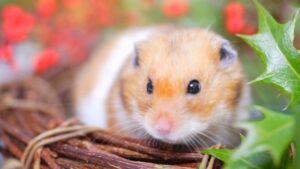
Can You Travel with a Hamster? A Comprehensive Guide
Traveling with a pet hamster isn’t as straightforward as it might seem. It requires careful consideration of your pet’s safety, comfort, and the logistics involved.
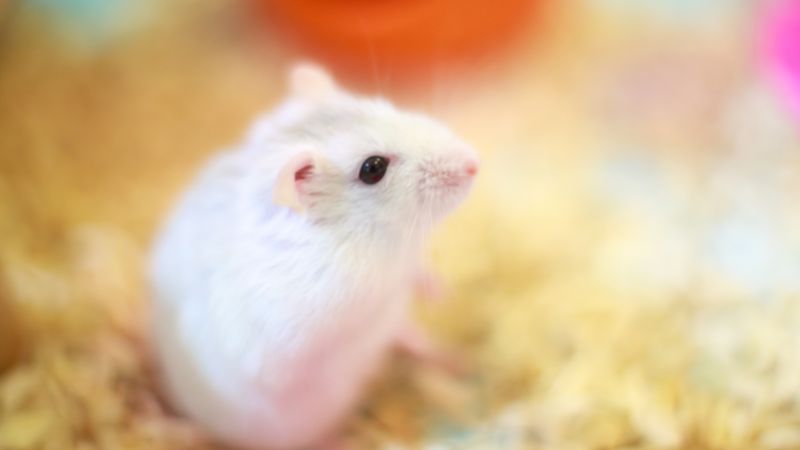
The winter white dwarf hamster, scientifically named Phodopus sungorus, goes by various names, including Russian dwarf hamster, Djungarian hamster, Dzungarian hamster, striped dwarf hamster, Siberian hamster, or Siberian dwarf hamster.
It belongs to the Phodopus genus and is one of three hamster species within this group. -From Wikipedia
| Where They’re From | Central Asia, northern Russia, China, and Kazakhstan |
| Type of Hamster | They belong to the Asiatic dwarf hamster group |
| Scientific Name | Phodopus sungorus |
| Size | They are about 3.5 to 4 inches long (9-11 cm) |
| Colors | They are usually gray or dark brown and have a dark stripe running down their back |
| How Long They Live | Typically, they live for 1.5 to 2.5 years |
| Personality | Winter White Dwarf Hamsters are calm, not very noisy, easy to make friends with, inquisitive, and generally friendly |
| How to Keep Them | It’s best to keep them individually. |
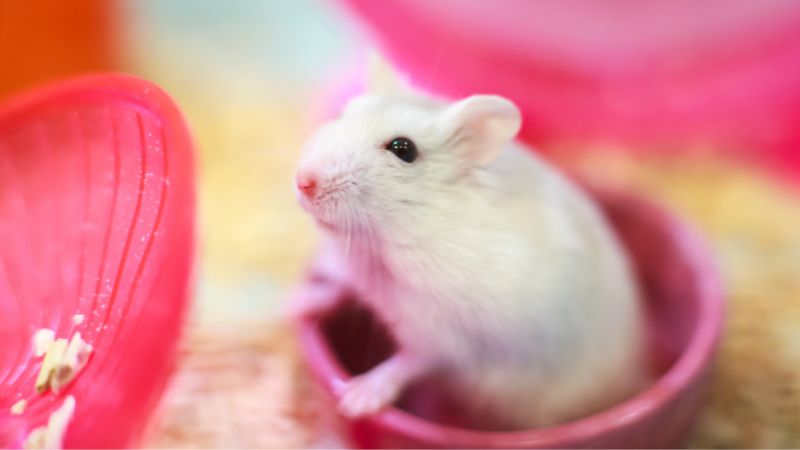
The winter white dwarf hamster is a special kind of dwarf hamster known for its enchantingly fluffy white winter fur. Another distinctive trait is the dark stripe along its back, which is also seen in the Campbell hamster, a sub-species of the winter white.
Winter white dwarf hamsters aren’t afraid of people. They’re more curious than scared and tend to be friendly and trusting. They’re not as easily frightened as Campbell dwarf hamsters or the more jittery Roborovski dwarf hamsters. However, they are still agile and alert.
In captivity, feed a diet of 75-80% high-quality hamster mixed with a variety of grains, seeds, nuts, and dried produce. Supplement with timothy hay plus limited fruits and vegetables like broccoli, carrots, and apples. Provide a constant source of clean, fresh water. Scatter and hide food to encourage natural foraging behavior. Avoid too many sugary fruits or seed mixes only.
You may also want to know:
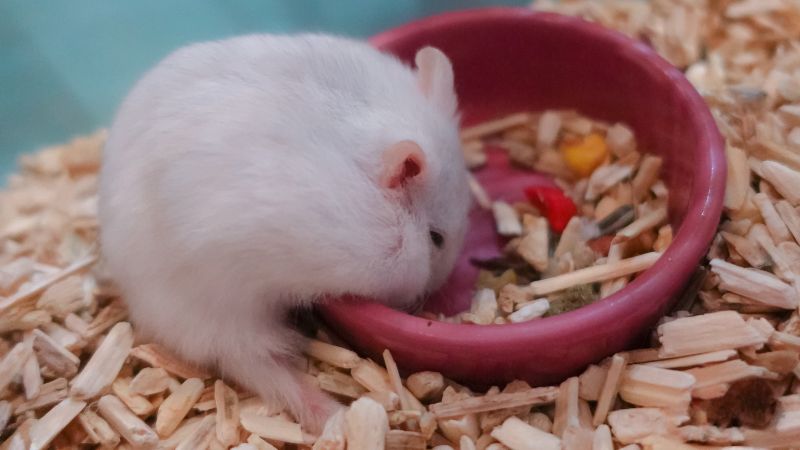
In their natural habitat, winter white dwarf hamsters have thick and silky fur that turns white during the winter months. This helps them blend in with the snowy surroundings, making it harder for predators to spot them. The fur changes to white when the days become shorter and there’s less daylight. When winter white hamsters are kept as pets, their fur may not change color as dramatically.
The key distinction between these two species lies in the shape of their bodies. Winter white dwarf hamsters are noticeably rounder in shape. In fact, everything about them is round – from their spherical bodies to their round faces, round eyes, and the round ears that stand atop their heads. Speaking of their eyes, unlike Campbells, winter white dwarf hamsters seldom squint their eyes. Additionally, their fur varies. Winter white dwarf hamsters have short, fine, and dense fur, while Campbells have longer fur.
The winter white dwarf hamster’s fur comes in an “agouti” or gray-blue shade, which is also referred to as sapphire. They have light or white fur on their bellies.
Native to cold climates, these hamsters thrive at cooler room temperatures from 60-70° F and can tolerate temperatures dipping as low as 40°. Avoid direct cold drafts and provide extra bedding for nesting if colder. Temperatures consistently above 75° can lead to heat stress.
Winter white dwarf hamsters typically weigh between 0.7 and 1.4 ounces (20 to 45 grams) and have a body length of 3.5 to 4 inches (9-11 cm).
The winter white dwarf hamster is sometimes called the Djungarian hamster. This name comes from a region in north-western China, even though these hamsters aren’t particularly numerous there.
To ensure the well-being of winter white dwarf hamsters, it’s essential to house them in cages featuring solid floors, high sides, and sufficient space for both burrowing and play. The recommended minimum cage dimensions should be around 20 x 12 x 12 inches. Providing a bedding layer of 6-10 inches, composed of materials like paper, aspen, or cellulose, is crucial to facilitate burrowing.
These hamsters also appreciate nesting materials such as timothy hay for constructing nests. To keep them entertained and engaged, include hides, tunnels, wooden toys, and an exercise wheel of appropriate size, up to 8 inches in diameter. If you’re looking for an ideal housing option, consider our wooden hamster cage, which measures 23 x 15 x 15 inches and comes with toys designed for winter white dwarf hamsters.
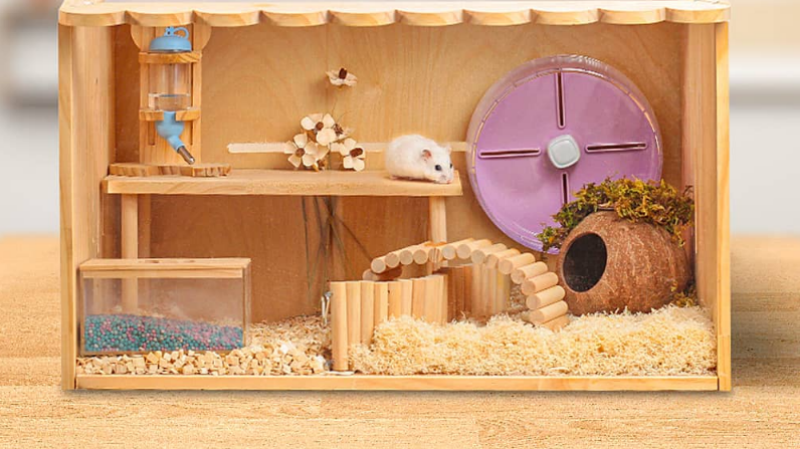
Winter whites may be shy initially but warm up with gentle handling, treats, and playtime. Use cupped hands to pick up dwarf hamsters and always supervise play outside the cage. Tame young hamsters by keeping your hands inside the cage to allow them to climb onto you. Gain trust before attempting to pick up.
Can winter white dwarf hamsters live together?
Winter White Dwarf Hamsters usually prefer to live alone because they can be a bit bossy and may fight if put in the same home. While they can share a home with other hamsters of the same sex, it’s often better to keep them apart to avoid problems and make sure they’re happy.
Can they live with different hamster types?
It’s usually not a good idea to put different types of hamsters together because they might fight over their space. Mixing different hamster types can make them feel stressed, get hurt, or have fights. To make sure your winter white dwarf hamster is happy and safe, it’s best to give them their special place to live.


Traveling with a pet hamster isn’t as straightforward as it might seem. It requires careful consideration of your pet’s safety, comfort, and the logistics involved.

Finding the best hamster cage for Syrian hamster is crucial, as these curious, low-maintenance, and independent pets thrive in the right environment. The primary concern

When I began, the task of selecting essentials for a natural hamster habitat was daunting. To ease this process, I’ve assembled an exclusive set of

Have you ever wondered, “Are hamsters happier in bigger cages?” Generally YES. It’s a question that might seem straightforward, but there’s more to it than
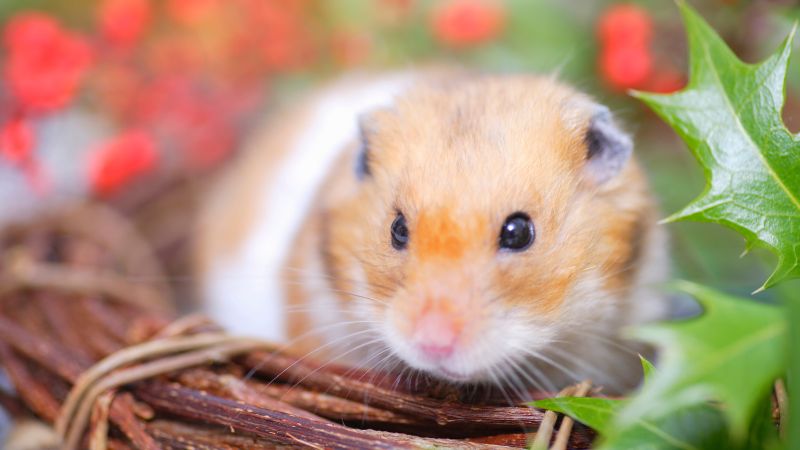
Traveling with a pet hamster isn’t as straightforward as it might seem. It requires careful consideration of your pet’s safety, comfort, and the logistics involved.

Finding the best hamster cage for Syrian hamster is crucial, as these curious, low-maintenance, and independent pets thrive in the right environment. The primary concern

When I began, the task of selecting essentials for a natural hamster habitat was daunting. To ease this process, I’ve assembled an exclusive set of

Have you ever wondered, “Are hamsters happier in bigger cages?” Generally YES. It’s a question that might seem straightforward, but there’s more to it than
Copyright © 2024 woodhamstercage. All Rights Reserved.